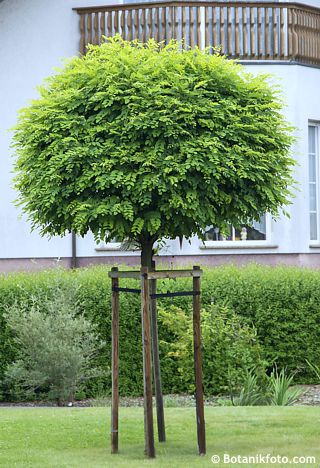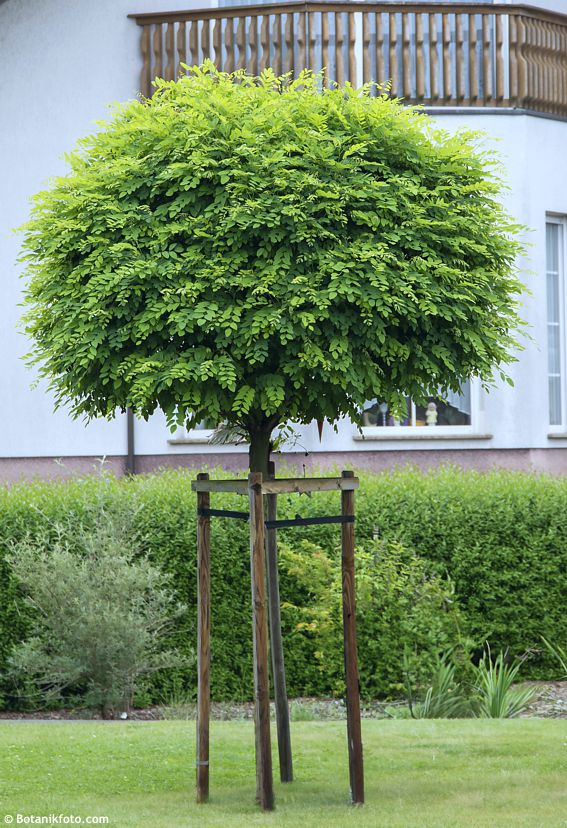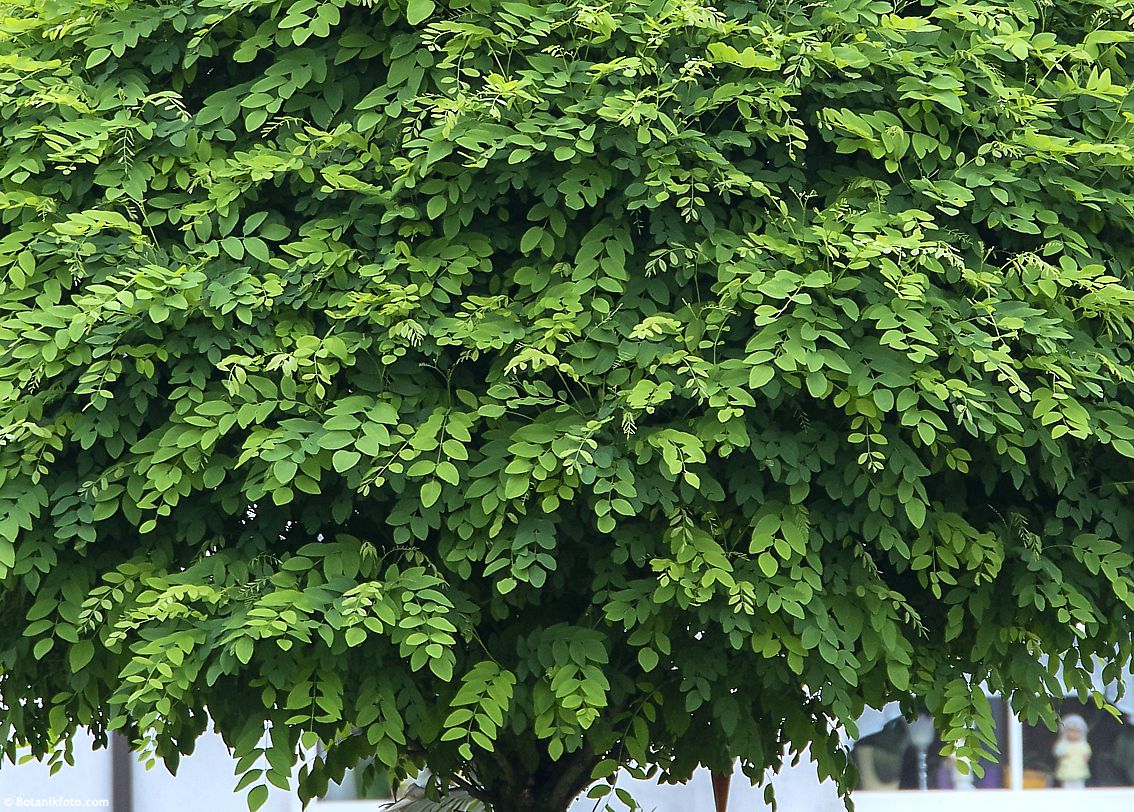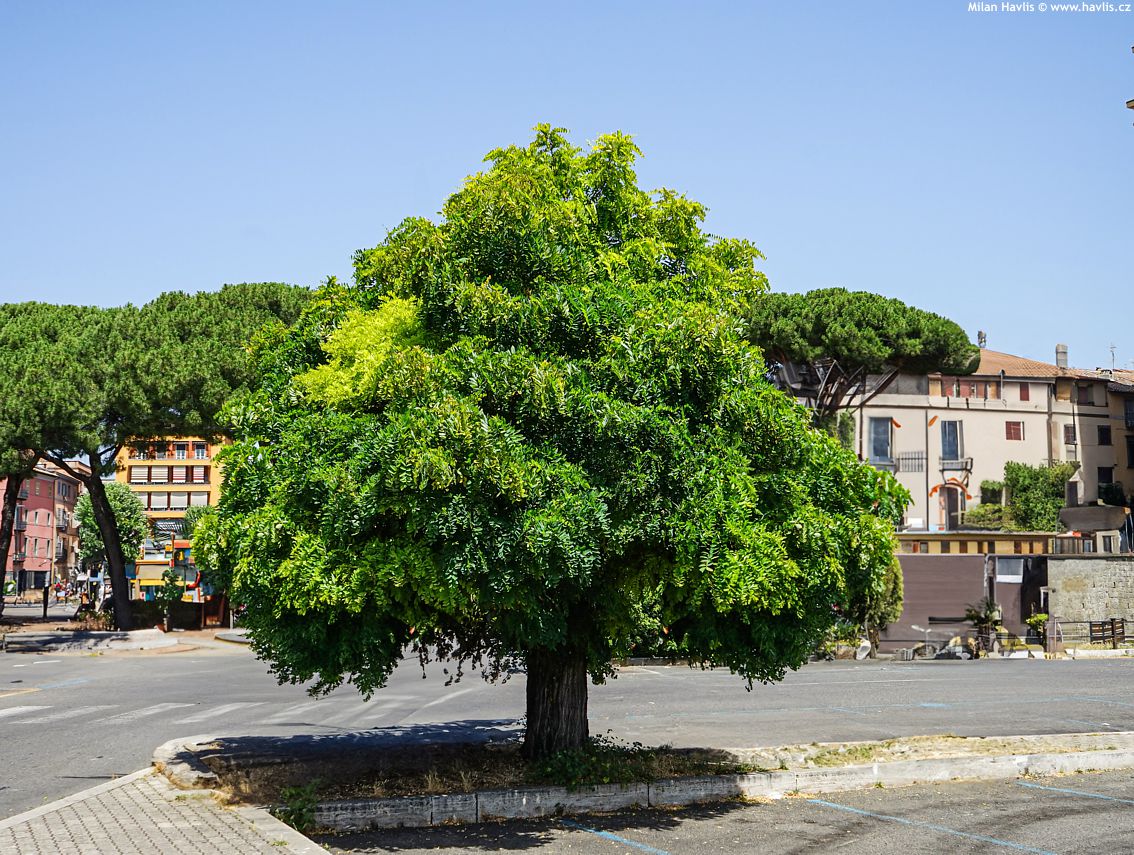Robinia pseudoacacia 'UMBRACULIFERA' mop-head acacia, black locust


Robinia
Black locust comes from Mexico and North America where it grows vigorously owing to invasive runners, spreading in unmaintained areas. This also happens in our country, which is why you can often see its beautiful, bright green foliage for example along railways, usually in dry soil and full sun. Fortunately, cultivated varieties usually lack invasive potential, so they are safe for gardens where they prove to be reliable in our C.E. conditions. Being virtually maintenance-free, they are popular in public greenery, too.Umbraculifera belongs among top five favourites suitable for small gardens and narrow streets as it has a compact, spherical crown that commonly grows to between 2 and 4 meters in width and slightly less in height. Only in open ground with unlimited root space they get slightly larger. Another advantage is the fact that it doesn't bloom, so don't expect a pile of withered, rotting flowers down on the ground as you can see under common, white-flowered locust. Standard trees always need a strong support for the first 3 years after planting before they establish. Also, during that time don't let the lawn grow close to the trunk – keep the area above roots clean and ideally mulched.
Locusts are not fussy about soil type, they even tolerate road salt but can’t cope with boggy or wet ground. They do not suffer from pests or common diseases, but we have seen trees with dead parts of the crown, most likely caused by a fungal disease hidden in the wood. The compact shape of the crown is natural without pruning, yet it can be done in early spring if you want to keep the crown size smaller. Fertilizing makes no sense. Fully hardy to min. -34 °C (USDA one 4).
Last update 07-12-2008; 24-01-2024
Goods are shipped all over Europe. For Russia and U.K. and for further details please read about SHIPPING OPTIONS HERE.
Are you interested in a serious discount for orders NOV-FEB? Check your options here.
THE PRICES INCLUDE VAT of 15%. For quick conversion you can use 1 CZK = approx. 0.04 EUR
- STANDARD QUALITY - Plants of this group are 1st class quality with number of branches and overall density adequate to their size and age, considering they were container grown.
- DE LUXE QUALITY - This label guarantees a luxurious quality of manually selected plants that, compared to their height and age, are exceptionally dense and beautiful.
- EXTRA - These plants are usually mature and bigger specimens with exceptional overall appearance.
- STANDARD (as described in the plant form) means a tree with a trunk of 190-210 cm and a crown at the top, unless specified differently. The commercial size for trees is their girth measured in the height of 1m from ground.
- HOBBY - These plants are of the same quality as our standard-quality plants but younger and therefore cheaper.
- SHRUB - a woody plant with branches growing bushy from the ground level.
- HALF-STANDARD or MINI-STANDARD - a small tree with shorter trunk, its size is usually specified.
- FEATHERED - These are trees with branches growing already from the base of the trunk and up along the stem.
- GRASSES and PERENNIALS - Sizes given usually read the diameter of the pot or the clump, as specified.
















